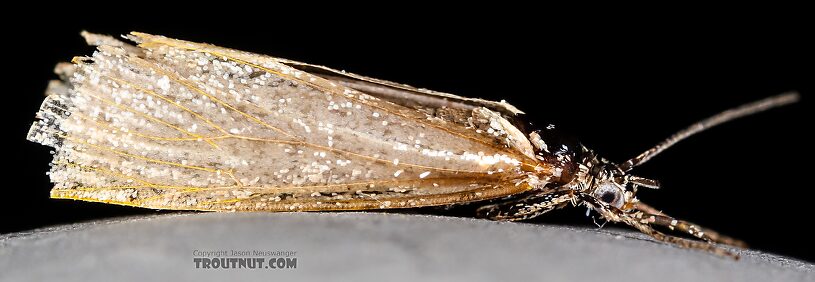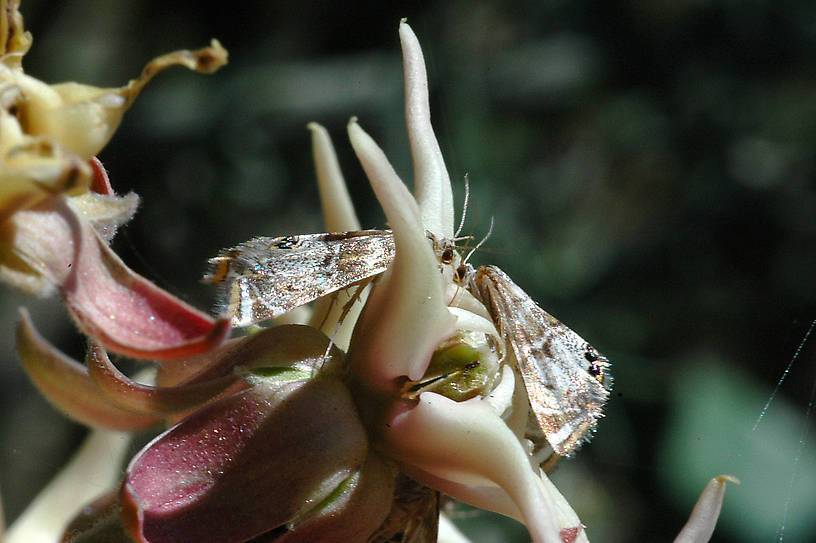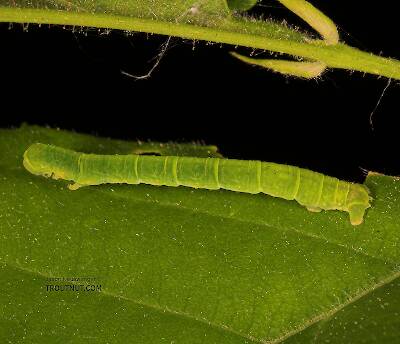
Blue-winged Olives
Baetis
Tiny Baetis mayflies are perhaps the most commonly encountered and imitated by anglers on all American trout streams due to their great abundance, widespread distribution, and trout-friendly emergence habits.
Featured on the forum

Some characteristics from the microscope images for the tentative species id: The postero-lateral projections are found only on segment 9, not segment 8. Based on the key in Jacobus et al. (2014), it appears to key to Neoleptophlebia adoptiva or Neoleptophlebia heteronea, same as this specimen with pretty different abdominal markings. However, distinguishing between those calls for comparing the lengths of the second and third segment of the labial palp, and this one (like the other one) only seems to have two segments. So I'm stuck on them both. It's likely that the fact that they're immature nymphs stymies identification in some important way.

Troutnut is a project started in 2003 by salmonid ecologist Jason "Troutnut" Neuswanger to help anglers and
fly tyers unabashedly embrace the entomological side of the sport. Learn more about Troutnut or
support the project for an enhanced experience here.
Insect Order Lepidoptera (Moths)
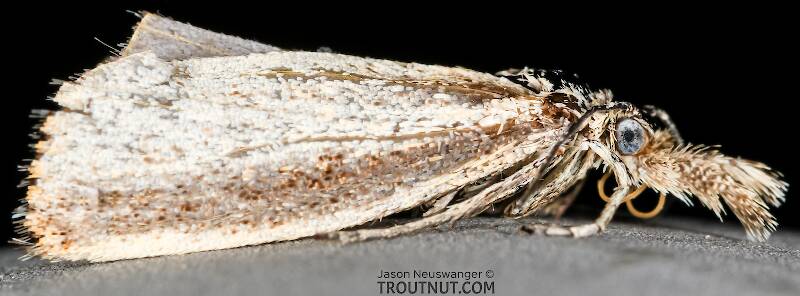
Many species, of course, are not aquatic at all.
Hatching behavior
The pupae of aquatic moths turn into adults underwater in their cocoons, so they are not worth imitating. The emerging adults, swim away from their pupal cocoons and are vulnerable to trout until they crawl or fly away from the water.Egg-Laying behavior
Time of day: Usually dusk or nighttime
Because almost all of the action is at dusk and later, anglers don't realize how prolific these insects really are.
Larva & pupa biology
Diet: Algae and plankton
Shelter type: Some build silk shelters.
Specimens of Moths:
3 Adults
1 Larva
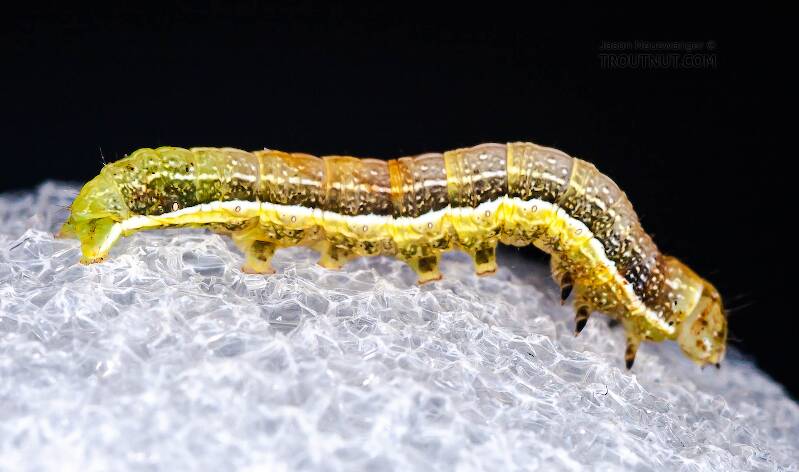
I caught this inchworm lowering itself to the surface of a trout stream from its silk thread. I saw a couple others floating on the surface, so it's likely the trout were familiar with them.
1 Streamside Picture of Moths:
Start a Discussion of Lepidoptera
References
- Jacobus, L. M., Wiersema, N.A., and Webb, J.M. 2014. Identification of Far Northern and Western North American Mayfly Larvae (Insecta: Ephemeroptera), North of Mexico; Version 2. Joint Aquatic Science meeting, Portland, OR. Unpublished workshop manual. 1-176.
- LaFontaine, Gary. 1981. Caddisflies. The Lyons Press.
- Swisher, Doug and Carl Richards. 2000. Selective Trout. The Lyons Press.
Insect Order Lepidoptera (Moths)
Taxonomy
Family in Lepidoptera
GeometridaeInchworms
1
7
Family in Lepidoptera: Geometridae
12 families (Arctiidae, Cosmopterigidae, Cosmopterigidae, Cossidae, Gelechiidae, Nepticulidae, Nepticulidae, Noctuidae, Olethreutidae, Pyralidae, Sphingidae, and Tortricidae) aren't included.


